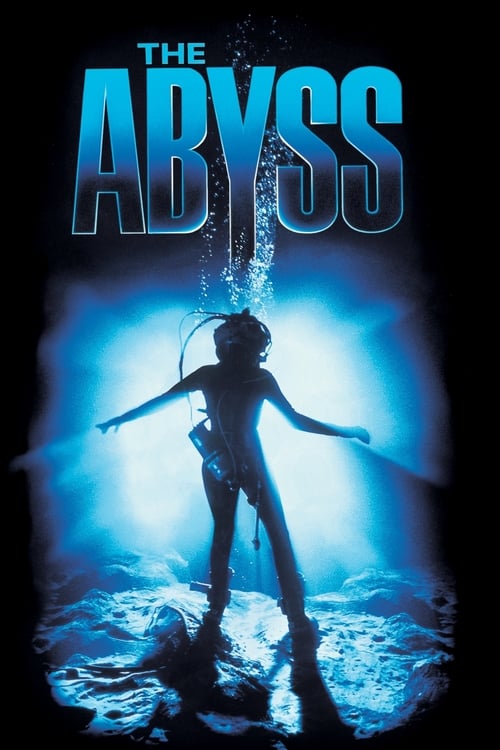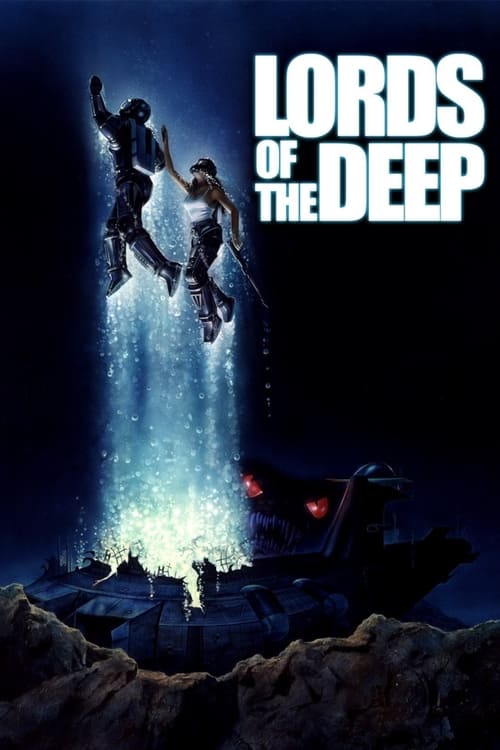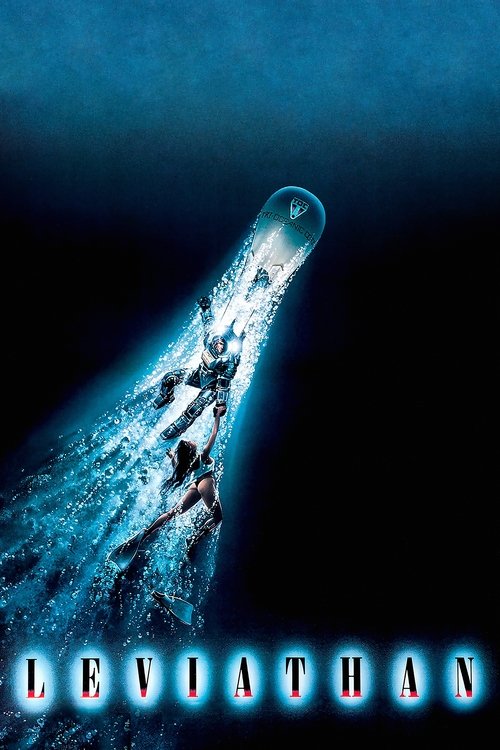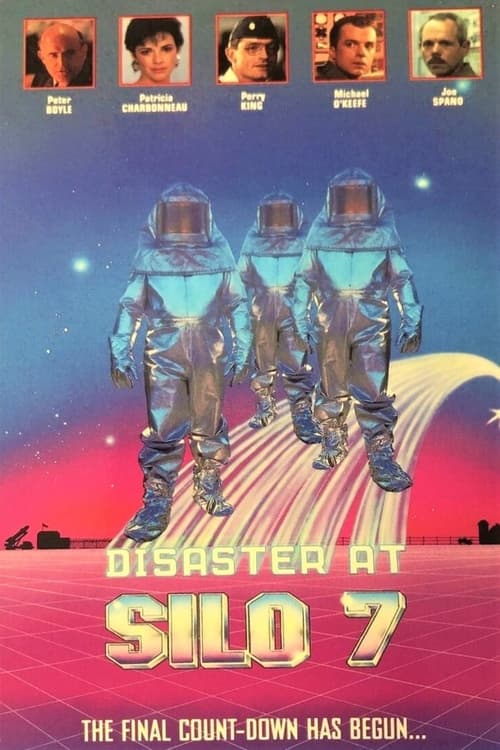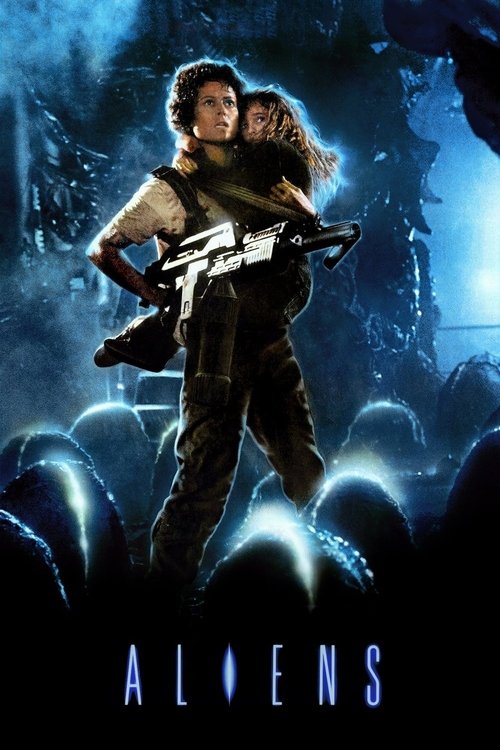
Ask Your Own Question
What is the plot?
In January 1994, deep beneath the Caribbean Sea near the Cayman Trough, the USS Montana, a U.S. Ohio-class nuclear submarine, mysteriously sinks after an encounter with an unidentified submerged object. The government quickly dispatches a Navy SEAL team to the experimental underwater drilling platform Deep Core, located near the wreck site, to recover the Montana's nuclear warhead before Soviet vessels can reach it. The rig's foreman, Virgil "Bud" Brigman, a seasoned diver and leader, is overseeing operations when the SEALs arrive. Alongside him is Dr. Lindsey Brigman, the platform's designer and Bud's estranged wife, who insists on accompanying the mission despite their strained relationship.
The arrival of the SEALs, led by Lt. Hiram Coffey, introduces tension. Coffey is a rigid, militaristic figure, increasingly paranoid about the unknown forces beneath the sea. Bud and Lindsey's personal history adds emotional complexity, their interactions charged with unresolved feelings. Lindsey, curious and perceptive, quickly notices strange phenomena around the Montana wreck. During an early dive, a power failure in their submersible plunges them into darkness, and Lindsey spots a glowing, bioluminescent light circling the submarine. She coins the term "non-terrestrial intelligence" (NTI) to describe these mysterious underwater beings, sensing something beyond human understanding.
As the team investigates the Montana, Jammer, one of the SEAL divers, encounters one of these glowing entities inside the submarine wreck. Overcome with panic, he slams his air tank against the doorframe, destabilizing his breathing mixture. He convulses violently and lapses into a coma, his life hanging by a thread as the medic Monk struggles to stabilize him aboard Deep Core.
Meanwhile, Lt. Coffey receives orders from his commodore to expedite the mission. Driven by a growing obsession and mistrust of the NTIs, he commandeers the rig's largest mini-sub, Flatbed, without permission, intending to recover the Trident missile warhead from the Montana before anyone else. His unilateral action coincides with an approaching hurricane, which soon engulfs the area in violent storms.
The hurricane wreaks havoc. The surface support ship tethered to Deep Core loses thrusters and drifts uncontrollably, dragging the rig toward the abyssal trench's edge. The crane cable connecting the ship to the rig snaps and falls into the trench, pulling Deep Core perilously close to the precipice before it finally halts. The rig suffers catastrophic damage; several crew members and one SEAL die in the flooding and power failures. The platform's life support and communication systems are compromised, leaving the survivors trapped and vulnerable beneath the stormy sea.
Amidst this chaos, Lindsey dons a deep-dive suit to inspect the rig's exterior oxygen tanks, crucial for survival. During her dive, she encounters two NTIs--one small, one enormous--glowing with ethereal light. She manages to photograph them before they swiftly descend into the trench's depths. Her photos provide tangible proof of the NTIs' existence, shifting the crew's skepticism toward cautious belief. Lindsey pleads with Bud, "You have to look with better eyes than that," urging him to see the NTIs not as threats but as sentient beings worthy of respect.
Tensions escalate when Coffey's paranoia deepens. He views the NTIs as hostile and a direct threat to humanity. Disregarding orders and warnings, he plans to detonate the nuclear warhead to destroy the alien presence. Bud confronts Coffey multiple times, trying to reason with him, but Coffey's mental state deteriorates into dangerous instability. This culminates in a brutal confrontation inside the mini-submersible Flatbed, where Bud fights to prevent Coffey from triggering the bomb and annihilating the NTIs--and possibly the rig itself.
In a critical moment, Lindsey nearly drowns during a deep dive to repair the rig's oxygen tanks, her air supply compromised amid the storm's aftermath. Bud's desperate rescue is a tense, emotionally charged sequence, highlighting their rekindling bond. As Bud reaches her, their eyes meet underwater, conveying fear, hope, and lingering love. He pulls her to safety, and their relationship begins to heal amid the crisis.
Recognizing the gravity of the situation, Bud volunteers for a one-way mission into the trench's abyss to disarm the nuclear warhead aboard the Montana. He dons an experimental liquid breathing suit that allows him to survive the crushing depths but offers no guarantee of return. As he descends, the crew watches anxiously, fearing the worst. Bud's oxygen is limited, and time is against him.
While disarming the warhead, Bud sends Lindsey a final, heartfelt text message: "I love you." He believes he will not survive the mission. The tension is palpable as he works swiftly, his breath visible in the liquid suit, fingers trembling but determined. Just as he completes the disarmament, the NTIs intervene. They rescue Bud, enveloping him in a glowing, bioluminescent light and guiding him into their vast underwater craft--a colossal, organic structure radiating with otherworldly beauty.
Inside the alien vessel, Bud experiences a profound, transformative vision. The NTIs reveal humanity's violent history--nuclear war, environmental destruction, and relentless conflict--through vivid, haunting imagery. Yet, they also show Bud a vision of hope: his own selflessness and love for Lindsey. The NTIs disclose that they had once planned to unleash massive tsunamis to wipe out humanity but halted their plan after witnessing Bud's compassion. This revelation underscores the film's central theme: humanity's potential for redemption through empathy and understanding.
The NTIs' communication is both telepathic and visual, their bioluminescent patterns conveying complex emotions and knowledge. Bud is reborn metaphorically and literally, emerging from the alien craft's liquid womb to breathe air anew, symbolizing a new beginning not only for him but for humanity's relationship with these enigmatic beings.
In a stunning climax, the NTIs raise their enormous ship, along with Deep Core, to the ocean surface. The rig's crew, battered but alive, reunites with the world above. Bud and Lindsey embrace on the platform's deck, their reconciliation complete. The film closes on this hopeful note, a testament to human resilience and the possibility of peaceful coexistence with the unknown.
Throughout the ordeal, the deaths are stark and impactful: several Deep Core crew members perish during the hurricane's flooding, as does one SEAL diver caught in the chaos. Jammer remains in a coma after his terrifying encounter with the NTIs, a silent reminder of the mission's peril. Lt. Coffey's descent into madness ends with his death during the mini-sub confrontation with Bud, a casualty of fear and paranoia.
The final confrontation between Bud and Coffey is intense and brutal. Coffey, wielding a weapon inside the cramped mini-sub, attempts to kill Bud to ensure the warhead's detonation. Bud fights back fiercely, ultimately overpowering Coffey and preventing catastrophe. Coffey's death symbolizes the triumph of reason and compassion over fear and aggression.
In the aftermath, Bud and Lindsey's renewed love, the survival of Deep Core's crew, and the NTIs' withdrawal from hostility leave the future open but hopeful. The film ends with Bud and Lindsey standing together on the surface, gazing at the sky, united by their harrowing journey and the profound mysteries of the deep ocean abyss.
This narrative arc of The Abyss weaves together human drama, high-stakes military tension, and awe-inspiring encounters with alien life, culminating in a message of hope, reconciliation, and the power of empathy in the face of the unknown.
What is the ending?
Short Ending Narrative:
In the climax of "The Abyss," the crew of the underwater drilling platform, Deepcore, faces a catastrophic situation as tensions rise between them and a military team. As the ocean begins to flood the facility, Bud, played by Ed Harris, makes a desperate dive into the abyss to save his estranged wife, Lindsey, and the rest of the crew. They encounter a mysterious alien presence that reveals its peaceful intentions. In a final act of bravery, Bud sacrifices himself to save Lindsey and the crew, ultimately leading to a resolution where the aliens prevent a nuclear disaster and Bud is miraculously revived.
Expanded Ending Narrative:
As the film nears its conclusion, the atmosphere aboard the Deepcore platform is thick with tension. The crew, led by Bud Brigman, is grappling with the impending threat of a nuclear weapon being launched by the military team, who are convinced that the underwater aliens pose a danger. The situation escalates when the Deepcore begins to flood, forcing the crew to make critical decisions about survival.
In a pivotal scene, Bud and Lindsey, played by Mary Elizabeth Mastrantonio, confront their tumultuous relationship amidst the chaos. Their emotional struggles are laid bare as they navigate the life-and-death stakes of their environment. The military, led by the aggressive Captain Coffey, becomes increasingly paranoid, believing that the aliens are a threat that must be neutralized at all costs.
As the Deepcore continues to fill with water, Bud makes a courageous decision. He dons a diving suit and prepares to descend into the depths of the ocean, where he hopes to find a way to communicate with the alien beings. The tension is palpable as he plunges into the dark abyss, the lights of the platform fading above him. The water is cold and murky, and the pressure builds around him, but Bud is determined to save Lindsey and the crew.
Meanwhile, Lindsey, trapped in the flooding Deepcore, fights against the rising water and the chaos around her. She is desperate to survive and to reconnect with Bud, who has always been her anchor. As Bud reaches the alien environment, he encounters the ethereal beings, who reveal their true nature. They are not hostile; instead, they are a peaceful species that has been observing humanity. The aliens communicate with Bud, showing him visions of their world and their intentions to protect Earth from the nuclear threat posed by the military.
In a heart-stopping moment, Bud realizes that the aliens can help avert disaster. However, he must make a sacrifice. As he struggles to return to the surface, he is caught in a powerful underwater current. In a final act of bravery, he allows himself to be engulfed by the alien presence, which saves him from drowning but also requires him to let go of his own life for a moment. The aliens revive him, and he is propelled back to the surface, where he finds Lindsey.
In the climactic resolution, Bud and Lindsey are reunited, but the threat of the nuclear weapon still looms. The aliens intervene, using their advanced technology to disable the missile, showcasing their power and benevolence. The military, witnessing this display, begins to understand that the aliens are not a threat but rather guardians of the ocean.
As the film concludes, Bud and Lindsey emerge from the depths, forever changed by their experiences. They share a tender moment, acknowledging the trials they have faced and the love that has endured through the chaos. The final scenes depict the ocean, calm and serene, as the aliens retreat into the depths, leaving humanity with a message of hope and the possibility of coexistence.
The screen fades to black, leaving the audience with a sense of wonder about the unknown and the potential for understanding between different worlds.
Is there a post-credit scene?
The Abyss does not have a post-credit scene. The film concludes with a powerful and emotional ending that wraps up the story without any additional scenes after the credits. The final moments focus on the characters' experiences and the implications of their encounter with the mysterious underwater beings, leaving the audience with a sense of wonder and contemplation about humanity's relationship with the unknown. The credits roll after the resolution of the main narrative, and there are no additional scenes or content following them.
What is the significance of the underwater alien life forms in The Abyss?
In The Abyss, the underwater alien life forms, known as the 'water tentacle' or 'water creatures', play a crucial role in the story. They are depicted as highly intelligent beings that communicate through water manipulation and light. Their presence raises questions about humanity's relationship with the unknown and the potential for peaceful coexistence. The climax reveals that they are observing humanity's actions, particularly in the context of nuclear warfare, and ultimately choose to intervene to prevent destruction.
How does the character of Bud Brigman evolve throughout the film?
Bud Brigman, played by Ed Harris, undergoes significant character development throughout The Abyss. Initially portrayed as a rugged and somewhat cynical oil rig foreman, Bud's journey into the depths of the ocean forces him to confront his fears and vulnerabilities. His relationship with his estranged wife, Lindsey, evolves as they face life-threatening situations together, culminating in a moment of self-sacrifice where Bud dives into the abyss to save her, showcasing his growth from a self-centered individual to a heroic figure.
What challenges do the crew face while working on the underwater oil rig?
The crew aboard the underwater oil rig faces numerous challenges, including technical malfunctions, the psychological strain of deep-sea pressure, and the threat of a military team sent to secure the area. Tensions rise as the crew must deal with the claustrophobic environment, the risk of drowning, and the deteriorating mental state of one of their members, who becomes increasingly paranoid and aggressive. These challenges test their teamwork and resolve as they navigate both the physical dangers of the ocean and interpersonal conflicts.
What role does the deep-sea environment play in the film?
The deep-sea environment in The Abyss serves as a character in its own right, creating a sense of isolation and danger. The dark, murky waters are filled with unknown threats, and the pressure of the ocean depths adds to the tension. The stunning visuals of underwater landscapes, bioluminescent creatures, and the vastness of the abyss contribute to the film's atmosphere, emphasizing the theme of exploration and the fear of the unknown. The environment also acts as a catalyst for the characters' transformations and the unfolding of the plot.
How does the film depict the theme of human conflict and cooperation?
The Abyss explores the theme of human conflict and cooperation through the interactions between the crew of the oil rig and the military team sent to investigate the underwater phenomena. Initial distrust and hostility between the two groups highlight the potential for conflict in high-stress situations. However, as the story progresses, characters are forced to work together to survive the threats posed by both the ocean and their own fears. This cooperation ultimately leads to a greater understanding of each other and the realization that unity is essential in the face of existential threats.
Is this family friendly?
In the movie "The Abyss," there are several scenes that may be considered potentially objectionable or upsetting for children or sensitive viewers.
-
Intense Underwater Scenes: The film features numerous sequences set deep underwater, where characters experience panic and fear. The claustrophobic environment and the threat of drowning can be quite intense and may cause anxiety.
-
Violent Confrontations: There are moments of conflict between characters, including physical altercations that can be quite aggressive. These scenes may depict characters in distressing situations, which could be unsettling.
-
Death and Danger: The film includes scenes where characters face life-threatening situations, including the loss of life. The portrayal of these moments can be emotional and may be distressing for younger viewers.
-
Alien Encounters: The film introduces mysterious and potentially frightening alien life forms. The initial encounters with these beings can be suspenseful and may evoke fear or confusion.
-
Psychological Tension: There are scenes that explore themes of isolation and psychological stress, particularly as characters deal with their fears and the unknown. This tension can create a sense of unease.
-
Strong Language: The dialogue includes some strong language, which may not be suitable for younger audiences.
-
Emotional Turmoil: Characters experience significant emotional struggles, including fear, anger, and despair, which may resonate deeply and could be upsetting for sensitive viewers.
These elements contribute to the film's overall intensity and may not be appropriate for all audiences, particularly children or those who are easily disturbed.

